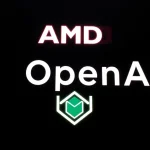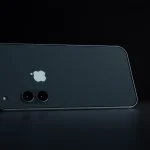FSR 4 INT8 on RDNA 2 and RDNA 3: Lower FPS and Quality

The gaming world has witnessed a remarkable evolution in graphics technology over the past few years, with AMD's FidelityFX Super Resolution (FSR) standing out as a serious contender against NVIDIA's Deep Learning Super Sampling (DLSS). With each iteration, FSR has made significant strides in performance and quality, making it a compelling option for gamers seeking enhanced visuals without the need for NVIDIA hardware. As we delve into the latest developments surrounding FSR 4, particularly the comparison between FSR 4 INT8 and FSR 4 FP8, you'll discover how these advancements impact gaming experiences on different GPU architectures.
The introduction of FSR 4 brings us the promise of improved graphics quality and performance, especially for users of AMD's latest RX 9000 series. However, the revelation of an INT8 version compatible with older RDNA 2 and RDNA 3 graphics cards has sparked interest and debate within the gaming community. In this article, we will explore these nuances, emphasizing the strengths and weaknesses of each version.
Understanding FSR: A Brief History of AMD's Technology
AMD launched its FSR technology in July 2019, marking the beginning of a new era in graphics rendering. The first version, FSR 1.0, received criticism for its lackluster quality compared to NVIDIA's DLSS. Nevertheless, it laid the groundwork for future iterations. The significant jump came with FSR 2, released in May 2022, which incorporated advanced algorithms to enhance image quality and performance.
Fast forward to September 2023, and we saw the launch of FSR 3.0, followed by FSR 3.1 in January 2025. These updates showcased AMD's commitment to refining its technology and closing the gap with NVIDIA. With FSR 4, the game has changed yet again, promising greater fidelity and performance, particularly for the RX 9000 series.
Comparing FSR 4 INT8 and FSR 4 FP8: Performance Insights
The recent testing of FSR 4 INT8, designed for RDNA 2 and RDNA 3 GPUs, has highlighted some notable differences when compared to the original FSR 4 FP8 used in RX 9000 series graphics cards. While both versions aim to improve visual fidelity, their performance can vary significantly based on the specific game and graphical settings.
- Quality Variation: Testing indicates that while FSR 4 INT8 generally outperforms FSR 3.1, it does not consistently match the quality of FSR 4 FP8.
- Artifacts: FSR 4 INT8 has been observed to produce visual artifacts, such as shimmering and motion blur, which are less pronounced or absent in FSR 4 FP8.
- Game Dependency: The effectiveness of each version can differ based on the game being played. Titles like Horizon Forbidden West show minimal differences, while others like Kingdom Come Deliverance II favor the FP8 version significantly.
The varying quality across different games suggests that while FSR 4 INT8 offers a substantial upgrade over FSR 3.1, it may not be the best choice for every gaming scenario. The differences highlight the importance of considering the specific game and graphics settings when evaluating performance.
Performance Impact: Understanding FPS Loss with FSR 4 INT8
One of the critical factors to consider when assessing FSR 4 INT8 is its impact on frame rates (FPS). Benchmarks indicate that using FSR 4 INT8 can lead to a reduction in FPS ranging from 9% to 13% compared to FSR 3, particularly on RDNA 2 and RDNA 3 graphics cards.
| Graphics Card | FPS with FSR 3 | FPS with FSR 4 INT8 | FPS Loss (%) |
|---|---|---|---|
| RX 6800 XT | 66.9 | 70.5 | 13% |
| RX 7800 XT | 81.2 | 9% lower | 12% |
| RX 9060 XT | Not applicable (uses FP8) | Minimal loss (3% - 5%) | - |
Using FSR 4 INT8 may offer better quality than FSR 3.1, but it comes at the cost of reduced performance. Users must weigh the trade-off between quality and FPS, especially when gaming at high refresh rates or in competitive scenarios.
The Future of FSR: What Lies Ahead?
As AMD continues to refine its graphics technology, the future looks promising. With ongoing developments in FSR, we can expect further enhancements that may close the gap with NVIDIA's DLSS offerings. The community eagerly awaits future updates that could address the shortcomings observed in FSR 4 INT8.
Additionally, we may see more games optimized for the specific advantages of FSR technology, which could improve performance and quality metrics across the board. This ongoing evolution suggests a dynamic future for gaming graphics, catering to a broader spectrum of hardware.
For those interested in a deeper exploration of these technologies, here’s a video that provides a comprehensive overview of FSR 4 and its implications for gamers:
In conclusion, while FSR 4 INT8 presents a valid upgrade over FSR 3.1, it is essential to consider the specific requirements of your gaming setup and the games you play. The technological advancements introduced with each new version of FSR continue to redefine the landscape of graphics rendering, offering gamers more choices to enhance their visual experiences.




Leave a Reply